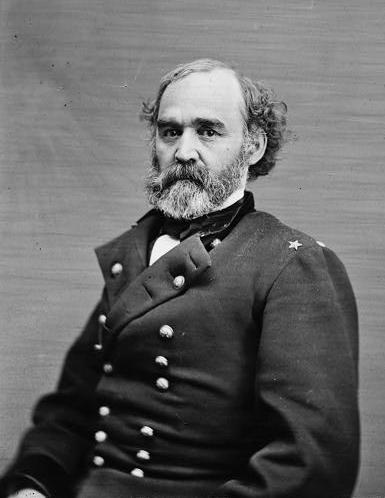The great ugly black beast was broadside in the 5 knot current, her bow struggling to turn upstream, her sloping metal sides sides slick in the heavy Mississippi air, black coal smoke pouring from her twin stacks. The Federal monster was the terror of the river, and unstoppable. Nothing of the Confederacy survived in her wake.
It was 12 December, 1862. Suddenly the beast's (above) hull beneath her bow was ripped open, and a dull, cruel column of brown water rose high into the air. Fifty pounds of black powder had ignited in the mud on the river bottom, and the twin shock waves, direct and reflected, shattered her wooden hull. “The water rushed in like the roar of Niagara,” said one of the sailors, and “In five minutes the hold was full of water and the forward part of the gunboat was flooded.”
In less than 12 minutes the 175 foot long, 51 foot wide Federal Ironclad "U.S.S. Cairo” had sunk in 35 feet of water, until only, “...the smoke stacks, and the flag staff..." still rose above the muddy Yazoo River. Amazingly, none of her crewmen were killed. But a very expensive piece of federal equipment had been destroyed by an improvised explosive device.
The stark weakness of the newly founded Confederacy was revealed on 7 August, 1861, when, in response to the rebel victory at the battle of Bull Run, U.S. Quartermaster General Montgomery Cunningham Meigs (above) offered a contract to build seven revolutionary armored gunboats priced at $89,600 per boat - a modern value of just under 3 million dollars each. Among the restrictions placed on the bidder was a $200 a day fine if each boat was not completed within 100 days of laying the keel. The man who won the restrictive contract was 41 year old James Buchanan Eads.
The steamboat captains who plied the Mississippi River and it's tributaries had given Eads the honorary tittle of "Captain", because he knew the river as well as Mark Twain. When he was 22 years old James Eads (above) had designed the first boat built to salvage goods from wrecked riverboats. By the time he retired he had amassed a fortune of half a million dollars - $17 million in modern values. And he put his money behind his bid for the new monsters.
Eads hired the best naval designer in America, 58 year old Samuel Moore Pook, and what he came up with was something never seen before or since on American Rivers. Each of the seven was be 175 feet long, and 51 feet 2 inches wide, with a length to beam aspect a miniscule 3 to 4 . The 888 ton boats would float in only 6 feet of water, or, in the parlance of the time, they could "navigate in a heavy dew,." and had three keels, providing strength and stability. The central casemate was walled in rolled iron plate 2.5 inches thick, slopped to increase it's effectiveness, and pierced by two gun ports at the bow, two at the stern and 4 ports on each side.
Engineer Thomas Merritt designed the two steam engines which drove the central paddle wheel that drove the gunships at up to 8 knots, (on average the Mississippi flows at 2 1/2 knots)
Eads contracted with 13 sawmills in seven states for the lumber to build his seven sisters. He hired 4,000 workers, paying them $2 for a ten hour day, set them to work seven a week. He had trouble finding suitable iron, and built seventy forges to manufacture the plating. Lights were even erected to continue work after dark. As work continued Pook modified his designs, resulting in variations in each ship.
For were built outside of St. Louis, and three at Mound City, Illinois. Eads spent his considerable fortune building the boats, and when the navy was slow in paying he had to borrow from banks and friends to finish the work. He was not paid until well into the new year.
On 12 October 1861, the first ship finished, ironclad gunboat USS Carondelet, slid down iron rails and into the Mississippi river. It would be three months before the USS Monitor was launched. She was soon followed by the St. Louis, Louisville and Pittsburgh, and then by the boats built at Mound City - the Cincinnati, Mound City and Cairo. Each was manned by a crew of 175 officers and men. These ugly lumbering lumps were, within a month steaming downriver to seize control of the inland waters.
The farm boys who witnessed the strange shape in the river dubbed the vessels "Pook's Turtles", and the name stuck. They were initially armed with six 32 pound cannon (the poundage being the weight of the shell they fired), three 8 inch Dahlgren smooth bore guns and four 42 pound rifles. Nothing in shore could stand up to these monsters, and very little on the water.
In many ways the armor was inadequate - the decks and stern were not covered, making them vulnerable to plunging fire. If the boilers were hit there no way to contain the escaping steam, the steering cables were unprotected, and the ships could not back out of a tight situation. But just the threat of the appearance of an ironclad was enough to make some rebel outposts and towns surrender.
The Confederacy struggled to build five ironclads, but only one ever got into battle, and when it broke down, it had to be scuttled. Meanwhile Eads and others built some 23 ironclad and "tinclad" boats, as well as 38 armored mortar boats. Those numbers stand out as proof of the foolishness of the slave owners challenging the industrial power of the north.
- 30 -






.jpg)
.jpg)

.jpg)

.jpg)
.jpg)
.jpg)


































No comments:
Post a Comment
Please share your reaction.